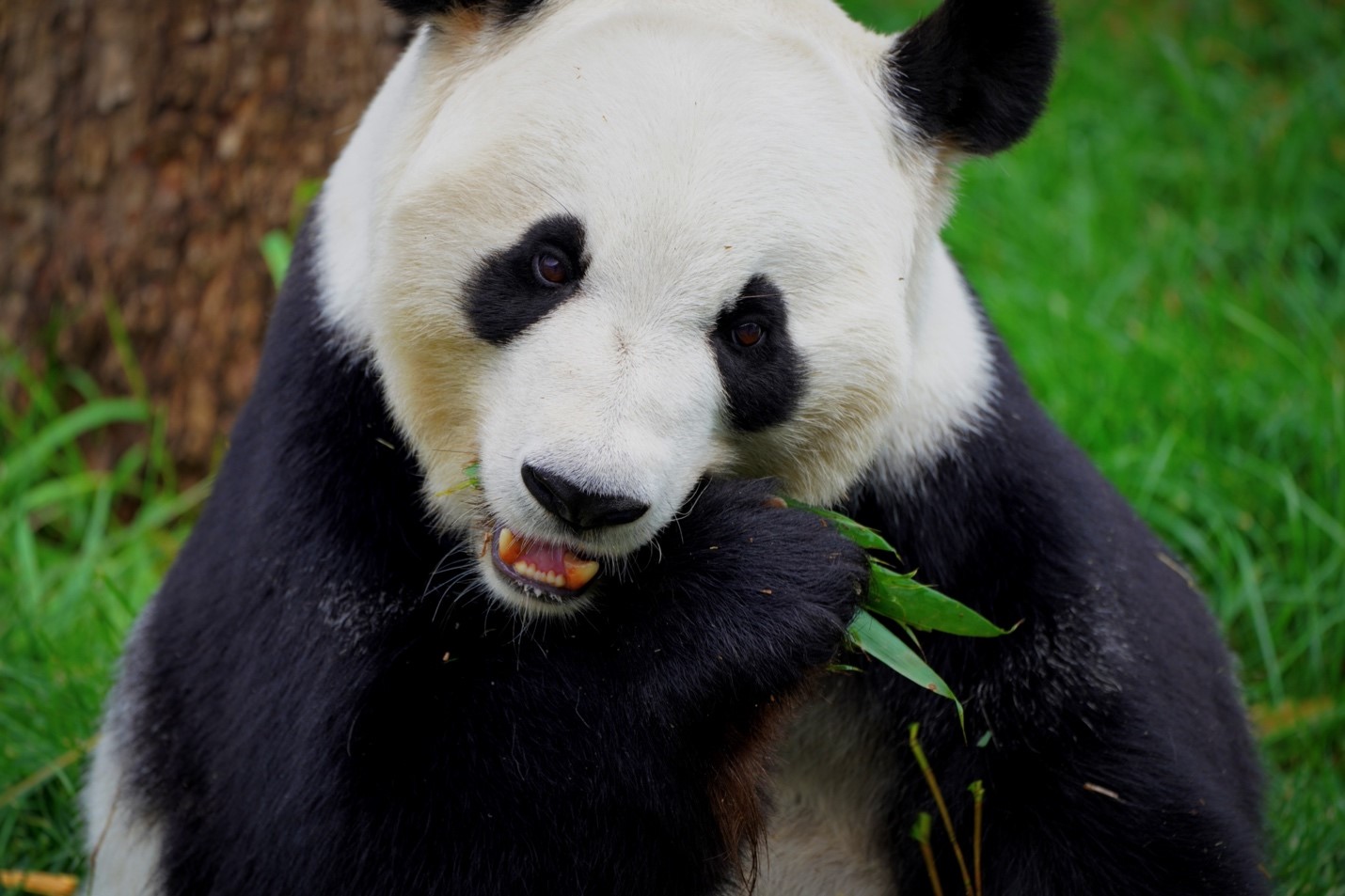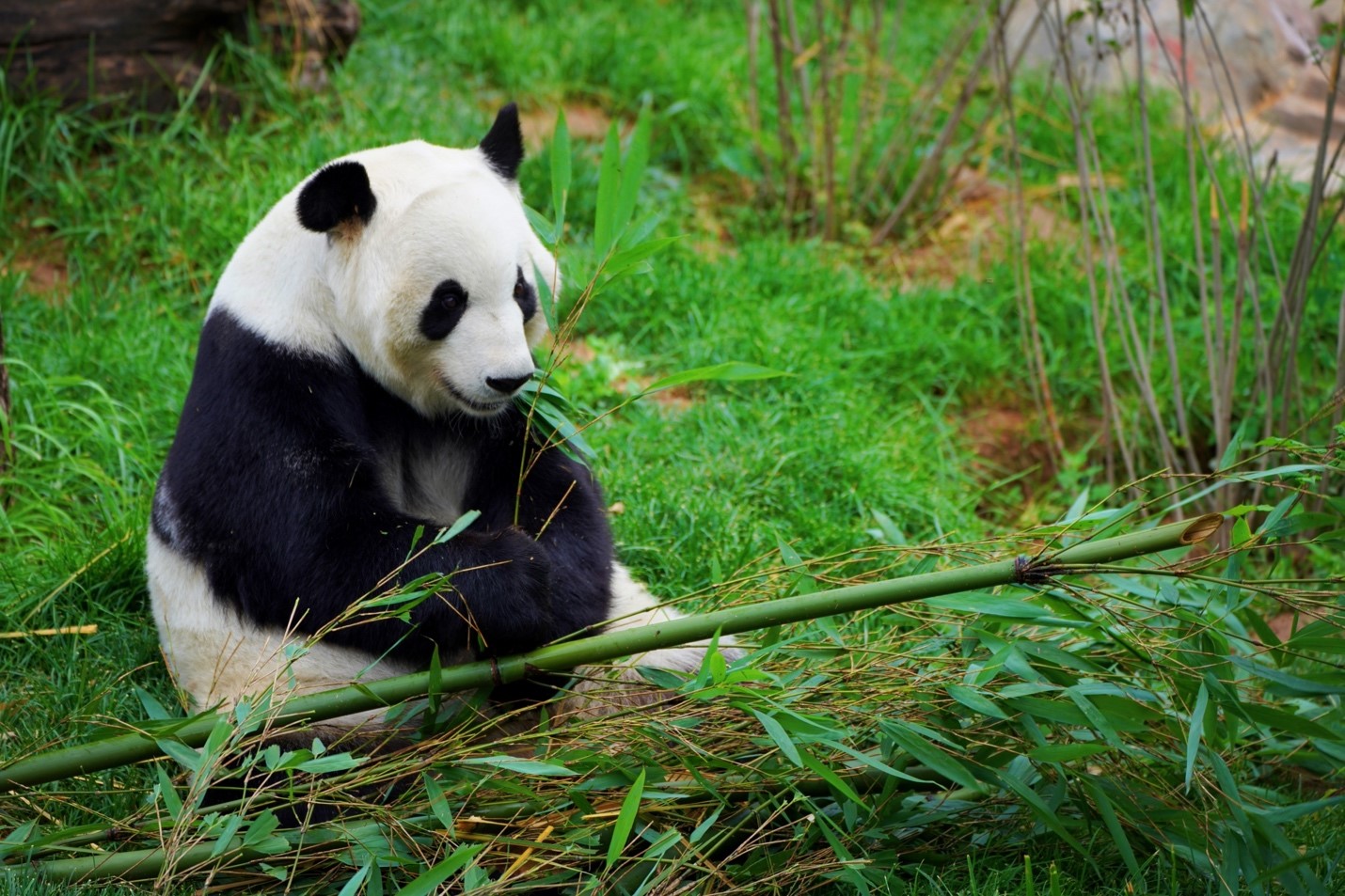Iconic panda a furry friend for the wild animals of the Qinghai-Tibetan plateau
High up on the Qinghai-Tibetan Plateau, a beloved beast is served up her favorite vegetarian fare of bamboo leaves, stems and shoots, supplemented by the occasional apple, striking a pose while a line of onlookers stream out onto a viewing platform with cameras in hand, hoping to catch a glimpse of one of the rare wonders of the animal world.
While the natural habitat of the Giant Panda (Ailuropoda melanoleuca) is limited to the high mountains and deep valleys situated along the remote upper reaches of the Yangtze River and its tributaries, stretching across Sichuan, Shaanxi and Gansu provinces in central China, Shuang Xin (nicknamed “Hehe”) along with three of her other panda bear companions have taken up temporary residence for the past three years at the Xining Qinghai-Tibetan Plateau Wildlife Park in Xining City, the capital of the next-door province of Qinghai. The national AAAA scenic spot opened in 2009 and serves as a one-of-a-kind center integrating wildlife viewing with animal rescue, breeding, care and welfare, along with wildlife conservation, scientific research and the promotion of science and environmental education.
After receiving approval from the National Forestry and Grassland Administration, the wildlife park signed a three-year agreement (2019-2021) with the Chengdu Research Base of Giant Panda Breeding, loaning out the four panda bears now exhibited to the public at the Xining Panda House. To date, the venue has attracted around one million visitors since opening its doors in June 2019, the program’s success indicating that the iconic animals may well continue their stayover at the panda house for the foreseeable future if all goes to plan.
The pandas have meanwhile become well-adjusted to life in their 4,617-square-meter facility at the wildlife park, which provides adequate heating in the colder winter months and humidity control to match the cool and wet climate characteristic of their original homeland in the montane primary forests of central China. Specially-sourced bamboo is flown in every other day from nearby Sichuan province to ensure a fresh and steady supply of the highly fibrous green plant that forms the basis of the panda bears’ diet.

Shuang Xin, a 10-year-old female panda, chomps down on bamboo leaves, stems and shoots, the staple diet of the iconic black and white bears, photographed at the Xining Wildlife Park’s panda house in the Chengxi district of Xining City, capital of northwest China’s Qinghai Province on July 26, 2021. (People’s Daily Online/Zhang Ruohan)
While the panda bears have served as a major draw for local residents and tourists alike during their stay at the Xining Wildlife Park, they also continue to play a more fundamental role as ambassadors for raising public awareness in the areas of environmental protection and the conservation of threatened species, providing a source of inspiration for younger and older generations alike to continue working towards the preservation of Qinghai’s own unique natural heritage.
“Giant pandas are among the most successful flagship species,” remarked Qi Xinzhang , deputy director of the wildlife park and its wild animal rescue and breeding center. “As a flagship species, the Giant Panda can effectively command widespread attention, the animal serving as a starting point for continuously expanding environmental education. As for public awareness, the panda’s portrayal is similar to that of a spectacular billboard for a film – although it cannot represent the entirety of the production, the animal can draw more people into the movie theater, letting them appreciate the film’s content in its entirety.”
The arrival of the furry friends has allowed the wildlife park to garner greater recognition from a larger number of urban residents, which has in turn helped the park to broaden its appeal and further expand the scope of its environmental education programming.

Shuang Xin, a 10-year-old female panda, sits next to one of her many daily meals of fresh bamboo, the finicky eater normally spending half of her day feeding on the highly fibrous green plant, photographed at the Xining Wildlife Park’s panda house in the Chengxi district of Xining City, capital of northwest China’s Qinghai Province on July 26, 2021. (People’s Daily Online/Zhang Ruohan)
Ru Yujie , assistant director of the department of management and operations at the Xining Panda House, underscored the importance of the task at hand in continually raising people’s ecological consciousness in support of conserving biological diversity and bringing ecosystems back into equilibrium, suggesting that shrinking populations of threatened species of wild animals ultimately stems from the continued destruction and encroachment of natural habitats, along with a lack of due regard for the concepts of green and sustainable development.
“If our work accomplishes its intended goal, impressing deeply upon the public’s mind, letting everyone fully appreciate the balancing effect that wild animals have on the ecological environment while recognizing that they are precious resources for the people of Qinghai as well as the whole of humanity; then at that time, the protection of wildlife will have become an intrinsic part of people’s behavior.”
In order to shore up public awareness and get people to show a greater interest in the wild flora and fauna native to the Qinghai-Tibetan Plateau, the Xining Wildlife Park has consistently dedicated itself to the painstaking task of promoting and publicizing the region’s distinctive and invaluable biological treasures while continually carrying out its scientific research work in support of that mission. The park’s artificial breeding programs have achieved a string of successes in recent years, with programs dedicated to the Snow Leopard (Panthera uncia), Pallas’s Steppe Cat (Otocolobus manul) and Himalayan Griffon Vulture (Gyps himalayensis), among other threatened species resident to the province. Much like the Giant Panda, whose habitat overlaps with a multitude of plant and animal species, it is hoped that the sustainable conservation of such iconic animals will provide an expanded umbrella of protection for the broader biological community.
“Biological diversity is an important part of the ecological environment. Protecting a species also means protecting the natural habitat where that species resides, which consequently alters the environment that we human’s rely upon for our own survival,” Ru noted. “While we ourselves go about protecting the Giant Panda, the giant panda in fact is meanwhile protecting humanity.”
Photos
Related Stories
Copyright © 2021 People's Daily Online. All Rights Reserved.










